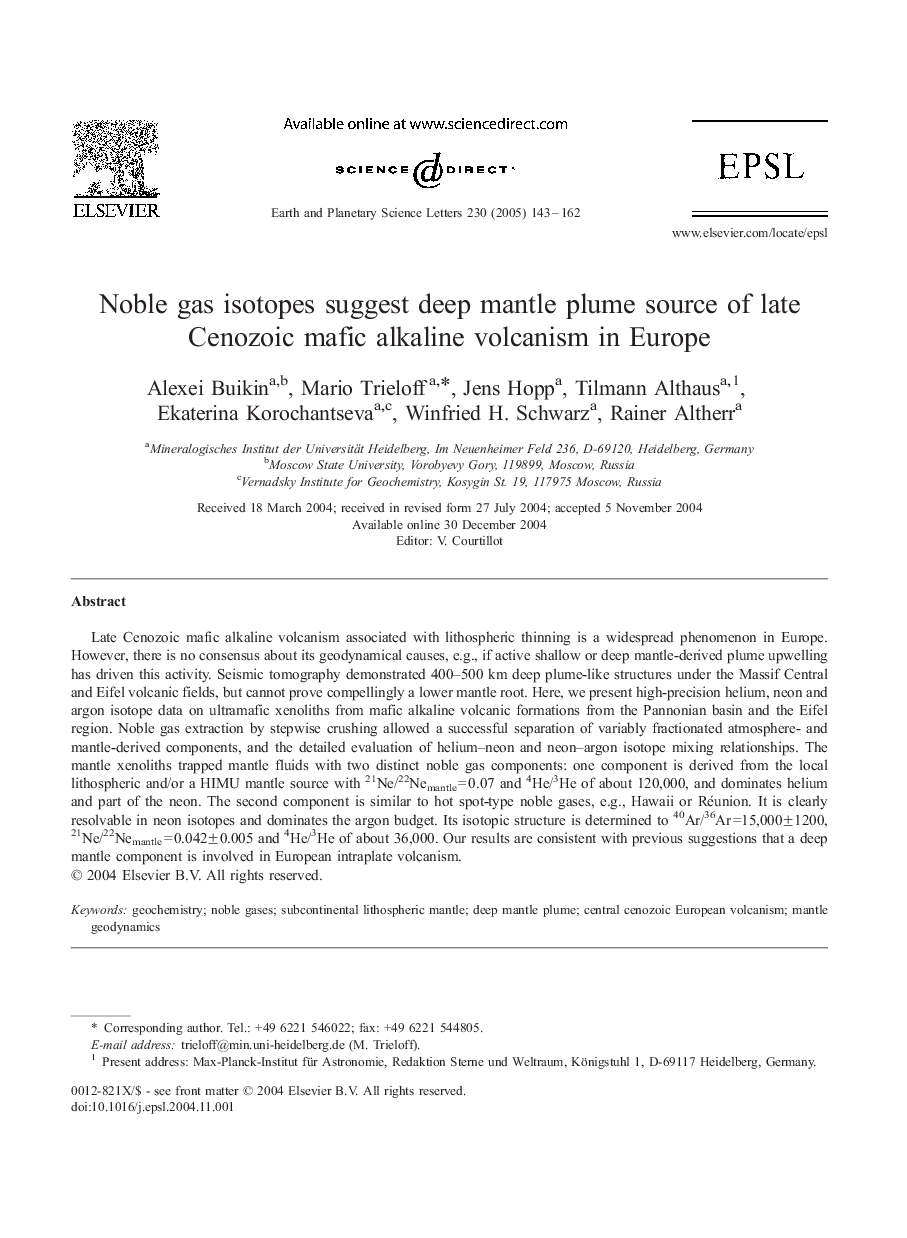| Article ID | Journal | Published Year | Pages | File Type |
|---|---|---|---|---|
| 9522534 | Earth and Planetary Science Letters | 2005 | 20 Pages |
Abstract
Late Cenozoic mafic alkaline volcanism associated with lithospheric thinning is a widespread phenomenon in Europe. However, there is no consensus about its geodynamical causes, e.g., if active shallow or deep mantle-derived plume upwelling has driven this activity. Seismic tomography demonstrated 400-500 km deep plume-like structures under the Massif Central and Eifel volcanic fields, but cannot prove compellingly a lower mantle root. Here, we present high-precision helium, neon and argon isotope data on ultramafic xenoliths from mafic alkaline volcanic formations from the Pannonian basin and the Eifel region. Noble gas extraction by stepwise crushing allowed a successful separation of variably fractionated atmosphere- and mantle-derived components, and the detailed evaluation of helium-neon and neon-argon isotope mixing relationships. The mantle xenoliths trapped mantle fluids with two distinct noble gas components: one component is derived from the local lithospheric and/or a HIMU mantle source with 21Ne/22Nemantle=0.07 and 4He/3He of about 120,000, and dominates helium and part of the neon. The second component is similar to hot spot-type noble gases, e.g., Hawaii or Réunion. It is clearly resolvable in neon isotopes and dominates the argon budget. Its isotopic structure is determined to 40Ar/36Ar=15,000±1200, 21Ne/22Nemantle=0.042±0.005 and 4He/3He of about 36,000. Our results are consistent with previous suggestions that a deep mantle component is involved in European intraplate volcanism.
Related Topics
Physical Sciences and Engineering
Earth and Planetary Sciences
Earth and Planetary Sciences (General)
Authors
Alexei Buikin, Mario Trieloff, Jens Hopp, Tilmann Althaus, Ekaterina Korochantseva, Winfried H. Schwarz, Rainer Altherr,
